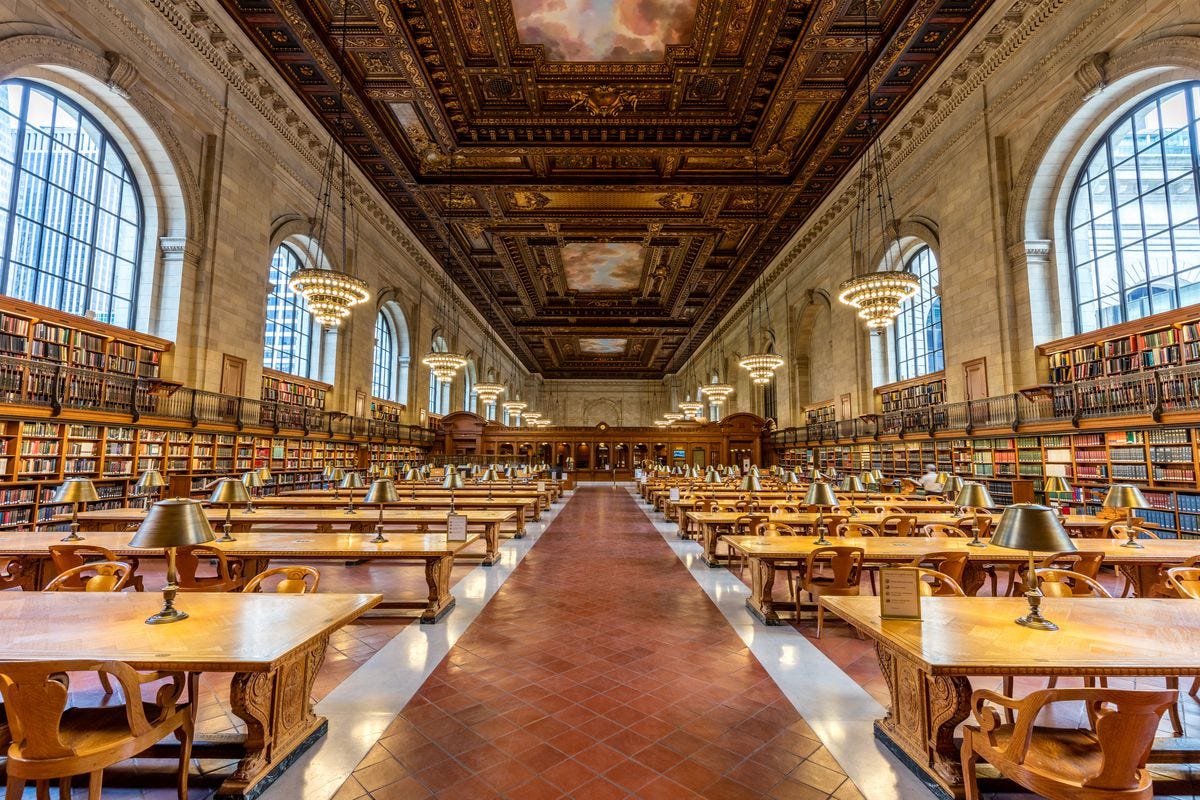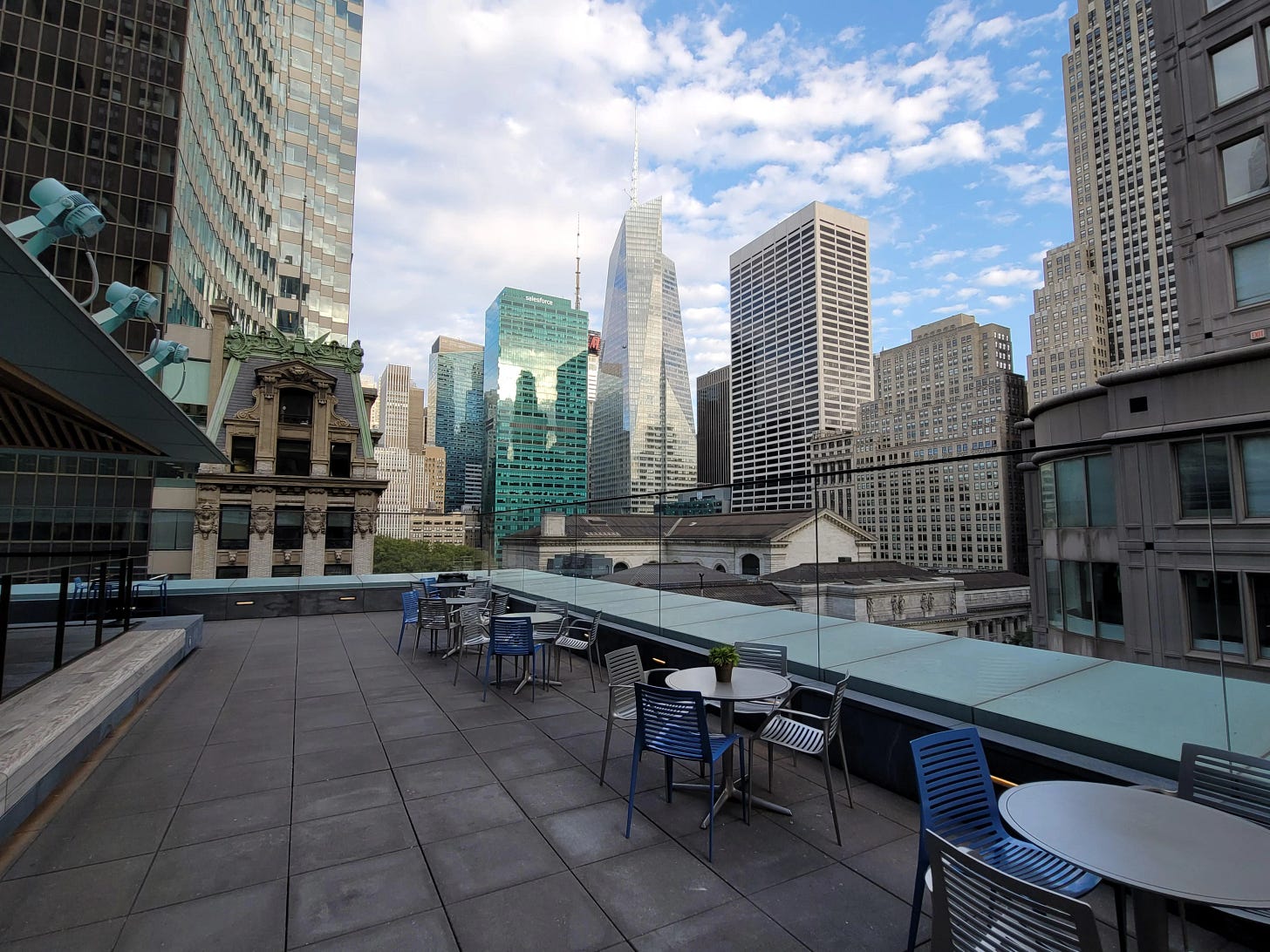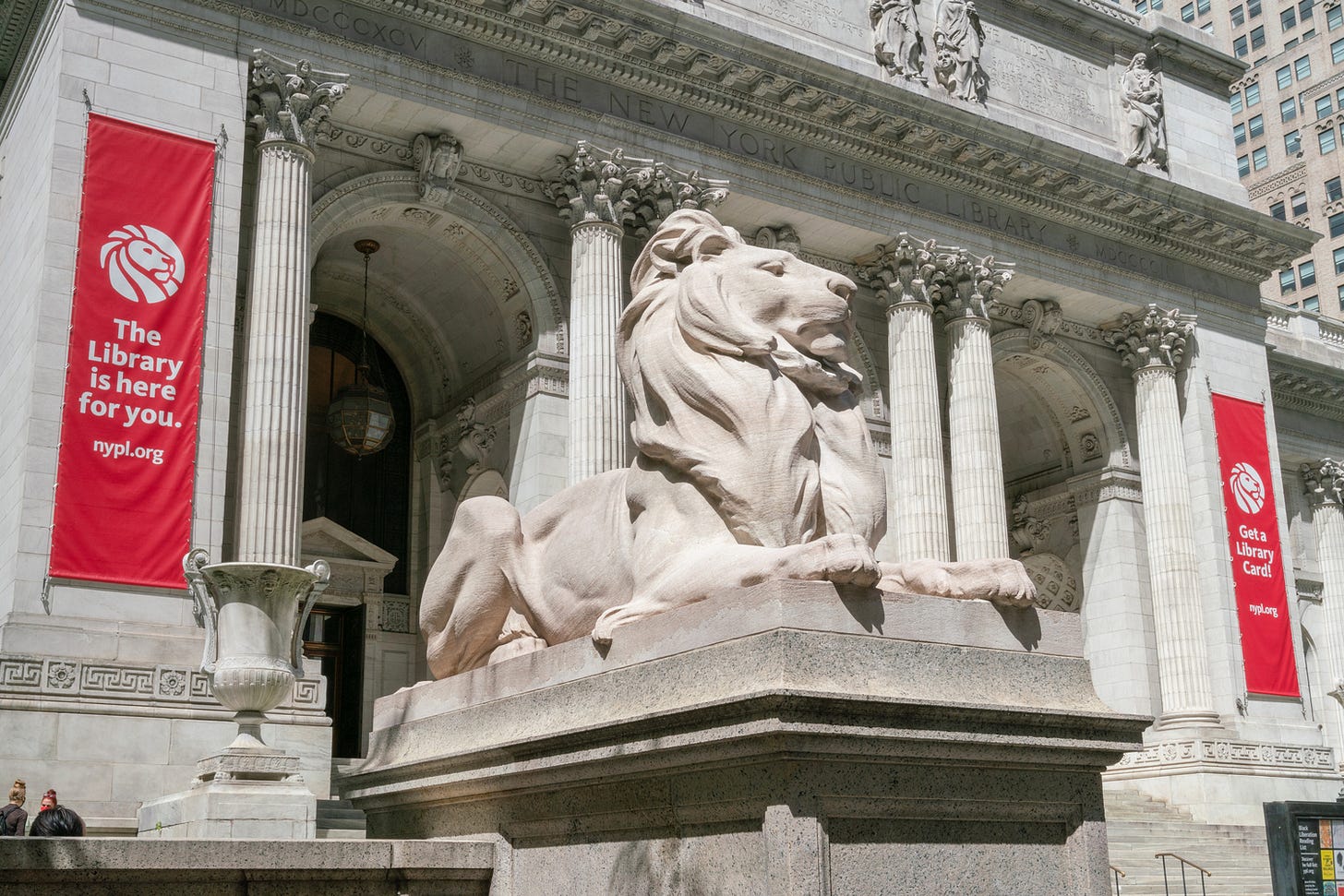There’s a lot to admire about the New York public library. The flagship libraries are stunningly beautiful, clean, well-staffed, and offer a bunch of free services.
That said, they’re stuck in two outdated paradigms:
The “Shh!” paradigm
The broken windows paradigm
Let me tell you a little story…
I co-worked at the Stavros Niarchos Foundation Library recently. My friend Jake was doing quiet coding work that day, except for one important call in the mid-afternoon.
All six floors of the library are designated quiet areas.
Jake, not sure where else to go, found an unlocked conference room and took his call from there. Ten minutes later, not one but three library employees came tsk-tsk-ing at the door and made him leave.
He moved to a hallway in front of the elevators and took the call standing up. Although he wasn’t disturbing anyone, the same staff members approached him to say that the hallway was not an appropriate space to take a call. They told him to take the call from the stairwell instead.
Soon, a different staff member came upon him in the stairwell and told him he couldn’t take calls from the stairwell.
At that point, Jake gave up and ended the call.
The Story Continues…
I had an important Zoom call scheduled for an hour later, so I went to the front desk and asked if there was any place to take a video call. The staff member suggested I take it from the stairwell 🙃
I decided to go to the roof and take my call using cellular data.
There were many people up there working or enjoying their day, so I walked to the far side of the roof, where I wouldn’t disturb anyone.
A library staff member approached me from across the roof. She said, “excuse me, you have to put your shoes on.” Her voice was stern, like I was in trouble; I had slipped off my sandals out of habit.
I put my shoes on — no big deal, but also a strange request, considering I was outside, and 40 feet from any other guest.
The “Shh!” Paradigm
Libraries have traditionally been quiet places to study. But the world has changed since the pandemic, and the NYPL should adapt to the changing needs of remote students and remote workers. While it’s important to have a space for deep work, the average student and average worker have occasional video calls.
By making absolutely no space for these activities in the library, you exclude countless citizens. Anyone who takes calls and cannot afford a co-working membership is constrained to working from home.
Like a library, co-working spaces have quiet workspace. But they also have places to take calls, like phone booths and bookable conference rooms. These would be a welcome addition to the library.
If constructing phone booths is prohibitive, another option is to make one of the six floors a loud space.
Explicitly designating loud areas would also be helpful for library staff. Oftentimes, library staff must discuss administrative matters and their voices carry through the otherwise pin-silent floor. It’s a little eerie.
The Broken Windows Paradigm
The broken windows theory says that if you ignore small infractions, citizens will be emboldened to commit larger and larger infractions.
The broken windows theory explains the woman who appeared on my secret corner of the rooftop to tell me to put on my shoes.
The broken windows theory explains why Jake was kicked out of a conference room, then a hallway, and then a stairwell…all while mid-call.
Order must be maintained.
I admit I don’t have enough experience here to say with confidence whether the broken windows theory works. Maybe public librarians have already tried being more lax, and suffered the consequences.
But the consequences of policing your guests are acute, felt in my increased heart rate, and the way I eye librarians warily now, and try to keep my distance.
Back when I had a WeWork membership, I never felt policed. But of course, their deterrents are different. A misbehaving WeWork member would probably be banned from WeWork forever.
The library doesn’t ban (as far as I can tell). That’s part of the beauty of the public library; anyone can walk right in; everyone is welcome.1
But the library doesn’t feel welcoming when your actions are so carefully constrained.
I wonder if there’s a solution here like restricting some sections of the library to library card holders. A library card would be free and available to everyone, but can also be taken away for misbehavior.
The Modern Library
What is a library? They were once a physical repository for books, but since the 90s, books have become second–class. The average library enjoyer at many of New York City’s biggest public libraries does not peruse the shelves at all.
There are two ways we could conceive of a library in the modern age:
A library is a place of learning, a place to further human knowledge.
A library is an indoor public space. The counterpart of a library is a park (an outdoor public space).
A library that takes itself seriously as a place of learning should adapt to the needs of modern-day students and knowledge workers. In that case, a library should probably look like a WeWork. In addition to a quiet workspace, a great library would have phone booths and free coffee. Heck, maybe the public library should have sparkling water on tap – I bet the cost would eventually repay itself via the economic value created by library-goers.2
Alternatively, we could think of a library as a public indoor space. This definition is far broader, but powerful. We could approach the library from a UX lens, and ask: how are people using the library and how can we better serve their needs?
Here are a few activities I noticed going on around me at the library:
Eating lunch on the rooftop.
Charging devices.
Doing laptop work.
Coming inside to get out of the summer heat.
Taking free library classes like Excel Genius.
Does each use case stimulate ideas for you, too?
Here’s one idea that came to mind for each use case:
Put more tables on the rooftop. Often when I am on the rooftop, every table is taken. There is enough space to add tables without the rooftop feeling over-crowded.
Provide fast-charging stations or charging lockers.
This use case is well accounted for, but perhaps provide external monitors you can plug into. (Currently, there are computers with monitors that you can use, but you can’t connect your personal computer to a monitor).
Fill a room or two with couches and allow people to be loud in them. Blast the AC.
Allow citizens to offer courses at the library, similar to how some colleges allow students to teach two-unit elective courses.
How will our libraries evolve? As citizens, it’s up to us to decide, and I’m excited to see what we create.
This is a little over-simplified. I’ve been to Los Angeles libraries where homeless people are quickly escorted out, so they are default banned. But no one is officially or permanently banned.
I love evaluating tax dollar spend by the metric: "for every dollar spent, X dollars was returned" (except unlike a VC fund, the returns go to the entire society in the form of economic value created). This is a great thread that looks at the outcomes of spending $20 billion on constructing, expanding and renovating hundreds of Los Angeles schools.






Yes! I have a lot of half-baked thoughts here I might spin out into a post.
First, a lot of these stem from a free tour of NYPL main branch (Stephen A. Schwarzman Building) I attended a week ago [1]. It's a chill way to start a Saturday or Sunday, so if that's of interest, just wanted to quickly plug that. I recommend booking tix a week in advance when they get released for the following weekend.
One new thing I learned from the tour was that the NYPL Main Branch isn't actually a normal library where the public can go in and check out books. Actually, it is a research library -- so, if you want to access the collections, you have to establish yourself as a researcher and book time to access the content there. This is really cool, but leaves a gap for how the broader public can engage with the library.
During the tour, I noticed over half (70%?) of the people sitting around were coding or on a computer instead of reading (side note: could be helpful to walk through the library sometime to quantify this more formally). This tells me this kind of work is already a core use case for library patrons. In fact, our docent told us they informally call the Edna Barnes Salomon Room [2] the "wi-fi room" since that's such a core use case.
I just Googled it and you are right -- computer classes are a thing at the NYC library system as a whole via the TechConnect program [3]. BUT, none of those classes are at the Main Branch.
I guess basically I think it would be cool if the Main Branch made this more of a priority. Right now it is stuck between being a museum, wedding venue [4], and sorta a place for people to work digitally. That last part would be a great way to engage with the public.
[1] https://www.showclix.com/event/nypl-building-tours
[2] https://www.nypl.org/node/177
[3] https://www.nypl.org/techconnect
[4] ngl, Kevin Love's wedding at NYPL did look pretty 🔥 https://www.instagram.com/reel/Ct61JOVLg4O